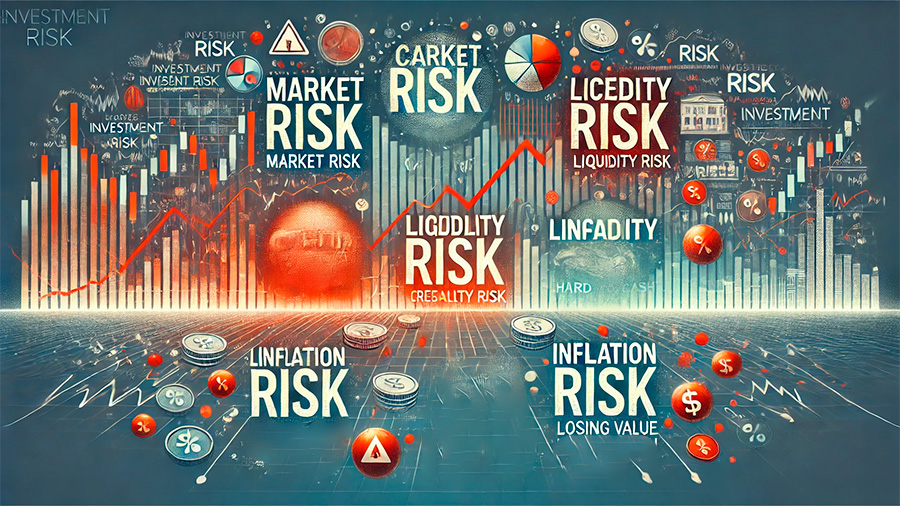In the world of investing, there is a fundamental relationship between profit and risk. While higher returns often come with increased risk, finding the right balance between these two factors is essential for successful investing. Whether you’re a seasoned investor or just starting, understanding how to manage risk while aiming for profit can help you make smarter financial decisions that align with your goals.
This article explores how investors can strike a balance between seeking profit and managing risk, offering strategies to optimize investments without exposing themselves to unnecessary losses.
What Is the Risk-Reward Tradeoff?
The concept of risk and reward is central to investing. Generally, the greater the potential reward, the higher the level of risk. For example, stocks of small, fast-growing companies may offer high returns, but they also tend to fluctuate more than shares of established corporations. On the other hand, government bonds are considered low-risk, but they usually offer lower returns compared to riskier investments like equities.
Investors must assess their risk tolerance when making decisions. Some may be comfortable taking on more risk for the chance of greater profits, while others may prefer safer investments, even if it means sacrificing potential gains. Striking a balance between risk and reward is about finding the right mix of investments that suit both your financial goals and your comfort level with risk.

Types of Investment Risk
Investing involves different types of risk, each with its own implications for profit potential. Understanding these risks can help you better evaluate your investments and manage the tradeoffs.
Market risk refers to the possibility of losing money due to changes in market conditions. Stock prices, for example, can fluctuate based on broader economic factors, such as changes in interest rates, inflation, or political instability.
Credit risk occurs when a borrower, such as a corporation or government, may default on their obligations, affecting bondholders or lenders. Higher-yield bonds often come with higher credit risk, meaning that while the returns may be appealing, there is a greater chance that the issuer might fail to meet its debt payments.
Liquidity risk refers to the difficulty of converting an asset into cash without significantly affecting its price. Real estate is a good example, as it may take time to sell a property, and the price can be volatile during periods of low demand.
Inflation risk impacts the purchasing power of your returns. Even if your investments are earning returns, if inflation is high, the real value of those returns could be eroded over time.
Being aware of these risks allows investors to better gauge the potential challenges and rewards of their investments.
Risk Tolerance and Investment Strategy
Your risk tolerance—how much risk you’re willing to take on—plays a major role in shaping your investment strategy. Risk tolerance varies from person to person and depends on factors like age, financial situation, and long-term goals. Younger investors may have a higher tolerance for risk because they have more time to recover from market downturns, while retirees or those nearing retirement may prioritize preserving capital over seeking high returns.
Before building an investment portfolio, it’s crucial to assess your risk tolerance. Ask yourself how comfortable you are with market volatility, and how much of your capital you’re willing to lose in pursuit of higher profits. Your risk tolerance will determine whether you pursue a more aggressive strategy, with a focus on growth investments, or a conservative approach, emphasizing stability and lower-risk assets.

Diversification: A Key to Balancing Risk and Reward
One of the most effective strategies for balancing risk and reward is diversification. Diversification involves spreading your investments across a variety of asset classes, such as stocks, bonds, and real estate, to reduce your exposure to any single risk. By investing in different assets, industries, or geographic regions, you can minimize the impact of poor performance in one area, while benefiting from growth in others.
For example, a diversified portfolio might include large-cap stocks for stability, small-cap stocks for growth potential, bonds for income, and real estate for long-term appreciation. Diversification reduces the likelihood that a single downturn will dramatically affect your entire portfolio, providing a more stable investment journey.
While diversification does not eliminate risk entirely, it can significantly reduce volatility and help investors achieve a better balance between risk and profit potential.
Understanding Risk-Adjusted Returns
When evaluating investment opportunities, it’s important to consider not just the potential returns but also the amount of risk required to achieve those returns. Risk-adjusted return measures the profitability of an investment relative to the risk involved. This metric allows investors to compare different investments with varying levels of risk and determine which ones offer the most efficient return per unit of risk.
For example, two investments may offer a 10% return, but one may come with significantly higher risk. The investment with lower risk would have a better risk-adjusted return, making it a more attractive option for investors seeking stability.
Metrics like the Sharpe ratio are commonly used to assess risk-adjusted returns. This ratio compares the return of an investment to the risk-free rate, factoring in volatility to help investors make better-informed decisions.
Active vs. Passive Investing: Which Is Right for You?
Balancing risk and profit also involves choosing between active and passive investing strategies. Active investing involves actively managing a portfolio by buying and selling assets in an attempt to outperform the market. This approach requires careful research, constant monitoring, and a willingness to take on higher risk for the chance of higher returns. However, active investing also comes with higher fees and the risk of poor timing or bad decisions.
Passive investing, on the other hand, involves tracking a market index, such as the S&P 500, through index funds or exchange-traded funds (ETFs). This strategy reduces the risk of trying to “beat the market” and tends to involve lower fees, but it also limits profit potential because passive investors accept market returns rather than seeking to exceed them.
For many investors, a blend of both strategies offers a good balance. Passive investments provide stability and broad market exposure, while active strategies may be used to target higher returns in specific sectors or asset classes.
Conclusion
Balancing profit potential with risk is a fundamental part of any successful investment strategy. By understanding your risk tolerance, diversifying your investments, and carefully evaluating risk-adjusted returns, you can make informed decisions that align with your financial goals. Whether you choose an aggressive approach or a more conservative strategy, managing the interplay between risk and reward is key to achieving long-term success in investing.




